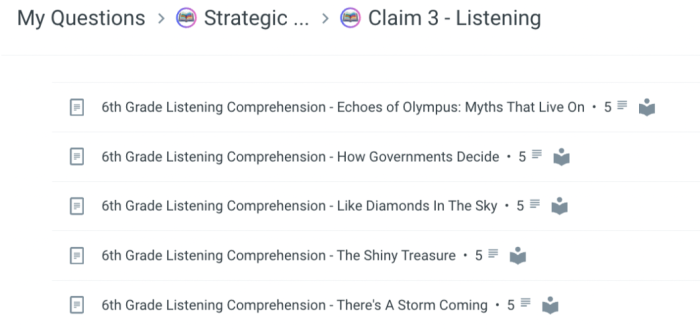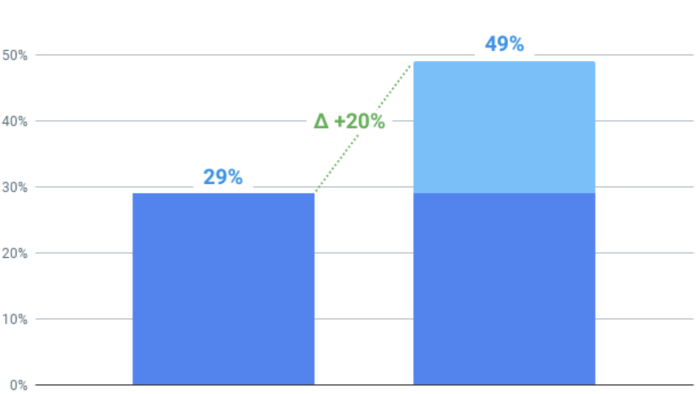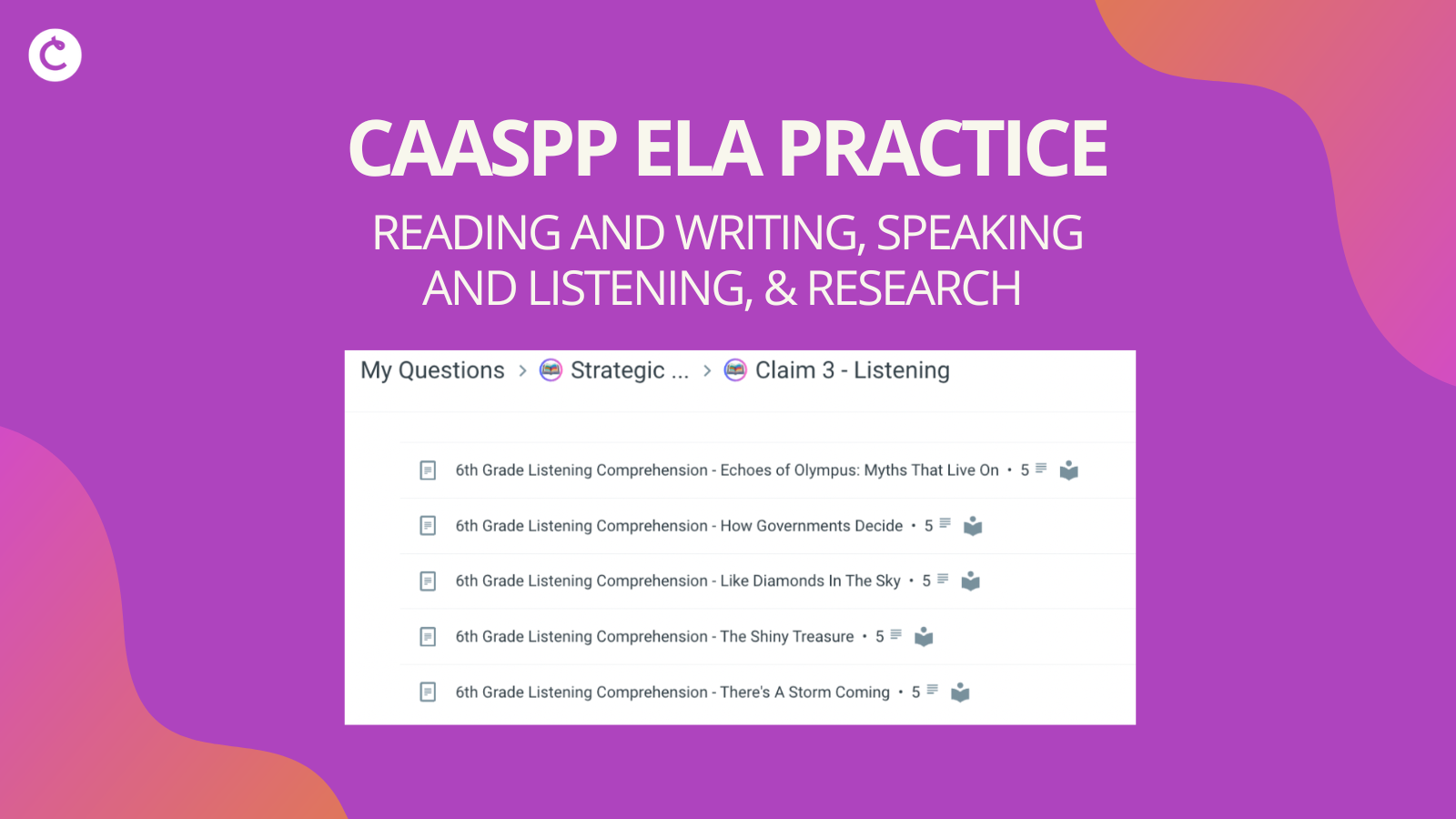CAASPP ELA Practice: Addressing the ELA Gap
Each spring, students in California face the high-stakes challenge of the CAASPP ELA assessment. While the test measures a wide range of academic skills, from reading and writing to speaking, listening, and research, many classroom routines focus more narrowly on a subset of those areas. This disconnect can leave students underprepared for the full scope of the exam.
Rather than building familiarity with strategies tailored to the CAASPP’s format, students often engage with texts in ways that involve classroom support: pre-reading discussions, vocabulary previews, and guided comprehension. As a result, they may be caught off guard when asked to demonstrate deep, independent thinking under timed conditions.
The Challenge of Cold Reading Passages for CAASPP ELA
To succeed on the CAASPP ELA exam, students must have strong cold reading skills as they are required to engage with passages they’ve never seen before, with no background context, teacher guidance, or class discussion to support them. This type of independent reading and listening experience is a major part of the exam, and it’s often where students struggle the most. Without the usual scaffolds they’re used to in the classroom, many feel overwhelmed or anxious, which can impact their performance.
This difficulty can manifest in several ways:
- Struggling with complex vocabulary and sentence structures: Without contextual guidance, students may misinterpret key details.
- Difficulty making inferences: Without class discussions, students must independently recognize implicit meaning.
- Managing time effectively: With no external prompts to keep them engaged, some students may spend too much time on a single question, affecting overall performance.
Gaps in ELA Preparation
While many curriculums cover reading and writing extensively, the CAASPP also assesses skills that can sometimes be overlooked in common curriculums:
Speaking and Listening
Often underemphasized in traditional test prep, these skills are crucial for demonstrating comprehension and analytical thinking. Students are expected to analyze spoken content and respond to oral presentations, yet these tasks are rarely practiced in a test-like format.
Research and Inquiry
The ability to evaluate sources, synthesize information, and construct evidence-based responses is critical for success but not always practiced in a testing format. Many students have experience with research projects but may not be familiar with answering research-related multiple-choice questions or short-response tasks under timed conditions.
Without structured exposure to these areas, students may feel unprepared and overwhelmed when they encounter these question types on the CAASPP.
How Classtime Helps Bridge the CAASPP ELA Gaps
To address these challenges, Classtime provides fully CAASPP-aligned reading comprehensions that mirror the test experience, featuring authentic CAASPP question stems pulled directly from the Smarter Balanced Task Models. By practicing with these resources, students build the confidence and skills needed to tackle the cold reading passages successfully.

Classtime’s reading comprehensions and performance tasks are designed to ensure complete coverage of all ELA claims, including the often-overlooked Speaking/Listening component. Classtime’s approach to improving CAASPP ELA scores includes:
- Authentic CAASPP-aligned question types: Ensuring students practice with the exact skills they’ll need on test day, reducing test-day surprises.
- Targeted practice for cold reading skills: Helping students navigate passages independently, think critically, and build reading stamina.
- Comprehensive task models: Addressing all four ELA claims to provide well-rounded preparation.
- Exposure to research and inquiry-based tasks: Encouraging students to engage with informational texts, analyze source credibility, and construct responses based on multiple sources.
- Speaking and listening preparation: Providing structured opportunities for students to listen and engage with informational texts.
Strategies to Support CAASPP ELA Success
In addition to using Classtime’s resources, teachers can implement the following strategies to help students strengthen their CAASPP ELA skills:
- Daily Cold Reading Practice: Assign short cold reading passages with comprehension questions to build student confidence in tackling unfamiliar texts.
- Timed Exercises: Encourage students to work within a time limit to simulate the testing environment and build pacing skills.
- Think-Aloud Strategies: Model how to approach complex passages, demonstrating how to break down difficult vocabulary and identify key details.
With this comprehensive approach, students will gain the skills and familiarity they need to succeed in every part of the CAASPP. By closing the gaps in Speaking/Listening and Research, alongside strengthening cold read strategies, Classtime ensures that students are not just test-ready, but truly equipped for academic success beyond standardized testing. By integrating practice into regular instruction and using CAASPP-aligned tools, educators can ensure that students feel confident and capable on test day.
We help California districts drive significant CAASPP score improvements by focusing on Strategic Thinking in Math and ELA. Our approach is designed to move Level 2 and 3 students to proficiency by strengthening the strategic thinking skills essential to drive real, measurable gains in ELA and Math proficiency.
This has resulted in increases of Δ +20% CAASPP improvements within the first year of implementation:

We are proud to be working on Strategic Thinking in Math and ELA with forward-thinking educators at:

We are a local team that is personally committed to education in California. We’d be excited to connect for a 15-minute consultation for your school or district!


